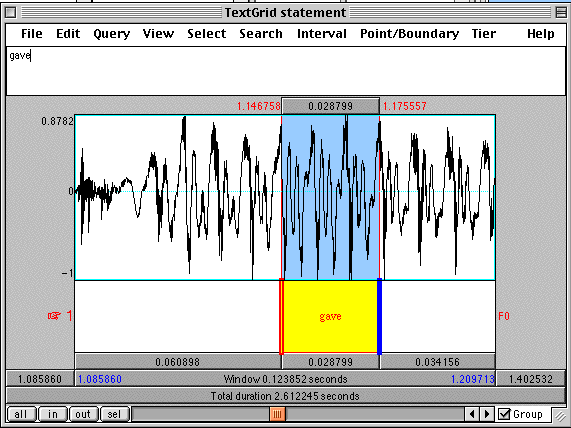

Most people’s pitch is 50 Hz-50 er of the voice (pitch) usually ranges from approximately 30300 Hz, but this varies according to different. Jitter Percent measurements were significantly higher in MDVP CONCLUSIONS: There is a potential for clinicians using PRAAT assessments in the clinic to make inferences from research using MDVP as an analysis tool. What Is Fundamental Frequency In Praat We usually define the fundamental frequency of a microphone’s voice as 30300 Hz, although this varies among different speaker systems.

from a Praat pitch tier object as long as they oc- acoustic measurements and. Means of Fundamental Frequency did not differ across the two devices but show a persistent pattern of greater values in MDVP. Fundamental frequency and related prosodic mea- compressed 10 recordings of. The Length of the acoustic signal and temporal analysis selection impact the correlation between Jitter Percent measurements across the two tools The correlation between Fundamental Frequency measurements across the devices was not affected. Praat allows you to automatically move your cursor to the F0 max or min in a selection. Now you can record F0 by simply choosing the relevant point in the pitch track and hitting F12 (for log 1) or Shift-F12 (for log 2).

LAB 4 THE SOURCE-FILTER MODEL OF SPEECH: FUNDAMENTAL FREQUENCY, HARMONICS. The fundamental frequency is the frequency of opening and closing cycles of the vocal fold, which is represented by the Point process object where every. This will give you the time (t1) and fundamental frequency (f0) at the cursor point. There is no correlation between Jitter percent's values and Fundamental Frequency within either Tool in our healthy voice samples. LAB 1 is an introduction to Praat: the layout of various displays and the. We excluded from enrollment any potential participants having a history of voice disorders or showing an abnormality in a pre-study assessment. We collected forty-two Maximum Phonation Time acoustic signals from 10 participants with Healthy Voices in a standardized setting. Subsequently, it explored if the measured acoustic signal's Length or the analysis temporal segment selection impacts potential correlation across the tools' measures. This study initially investigated the relationship between Fundamental Frequency and Jitter Percent across and within MDVP and PRAAT.


 0 kommentar(er)
0 kommentar(er)
